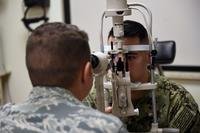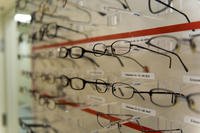Source: The Military Resale and MWR Center for Research -
Threats to Commissary and Exchange Benefits Challenged by New Report
Repeated attacks on the commissary and exchange benefit that would increase prices and eliminate the benefit entirely for retirees and other current beneficiaries have been challenged by a recently released report by commissary and exchange advocates.
The Military Resale and MWR Center for Research, established by the American Logistics Association, released a major economic review of the military resale system documenting these benefits for the military community and the nation.
Pat Nixon, President of the American Logistics Association which released the report, Costs and Benefits of the Department of Defense Resale System, said, “the resale system demonstrates a remarkably high return for resources invested in this program, producing jobs, funding for vital military community programs, and promoting American industry.” According to Nixon, “The system blends the best of the private sector and government coming together to fulfill that reciprocal commitment to our men and women in uniform who have given so much.”
The Department of Defense (DoD) operates hundreds of exchange and commissary outlets at installations around the globe producing $18 billion a year in revenue, providing a wide range of products and services at prices 24 to 50 percent below prices at commercial establishments.
The economic report challenges findings of the Congressional Budget Office (CBO) that have served as the basis for several Congressional actions in the past year including measures passed by the Veterans Affairs Committee and introduced as amendments to the 2012 Defense Act as well as being cited as a cost-cutting measure in several reports by Washington think tanks.
The report outlined nearly $24 billion yearly economic benefit to the nation or a twenty-to-one return on every dollar invested by the Government in its operation. The system “produces $10.97 billion in economic benefit to the Department of Defense for the $1.757 billion provided in taxpayer support, a $6.24 return for every $1.00 of appropriations used”, according to the report.
The report found that the CBO recommendations would actually cost DoD $40 billion instead of saving the government money and that the impact to the National economy was even greater—placed at $80 billion.
According to the report, commissaries and exchanges are the largest employer of military families in the world and the leading employer of veterans in the nation. The report shows the system has taken out billions of dollars in costs over the years. “Everyone says government should operate more like a business. Well, this is one part of government that already operates like a business,” Nixon added.
Among other report findings:
- Provides $4.5 billion in annual savings to military patrons.
- Reduces cost of living allowance payments by over $738 million per year.
- Promotes the sale of nearly $3.7 billion annually in U.S. products overseas.
- Provides $330 million in vital community support funding for military installations.
- The system makes a major contribution to National Security, supporting deployed forces, often in forward combat areas valued at $117 million annually.
- Is one of the most efficient organizations in Government with over $700 million in annual efficiencies. If commissaries had not realized efficiencies, its appropriation requirement trajectory would have taken it over $2 billion. Instead, its costs are under $1.4 billion. Another $500 million was saved by the Government in inventory reduction efficiencies.
- This includes $10.51 billion in economic benefit to military service members and families for a $5.97 return for every dollar of appropriations used.
- When direct cash contributions by the system to the government are measured against the appropriations spent, the system yields $373 million per year in proceeds to the government.
- Military personnel are shareholders in their own resale programs. A portion of their paid transaction is allocated to recapitalization, saving the taxpayer money and building military family equity. Over the past 20 years, this investment in facility and other capital investments have amounted to $12.5 billion. The total amount of shareholder equity in the system is estimated at $12 billion.
- Costs for these programs have been kept constant or dropped in real terms in the past ten years while costs of other DoD programs have doubled and even tripled. Health care in DoD costs 28.8 times what the resale system costs taxpayers and represents only 2.2 percent of expenditures for health care and family support services. The basic allowance for housing is 13 times higher than the appropriation for the military resale system. Yet, commissaries and exchanges rank near the top for reasons military personnel stay in the service.
For a copy of the report or to learn how you can help protect the military resale benefit, visit http://www.saveourbenefit.org/.



